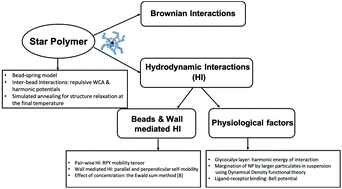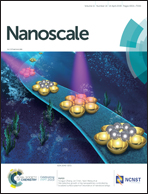Stiffness can mediate balance between hydrodynamic forces and avidity to impact the targeting of flexible polymeric nanoparticles in flow†
Abstract
We report computational investigations of deformable polymeric nanoparticles (NPs) under colloidal suspension flow and adhesive environment. We employ a coarse-grained model for the polymeric NP and perform Brownian dynamics (BD) simulations with hydrodynamic interactions and in the presence of wall-confinement, particulate margination, and wall-adhesion for obtaining NP microstructure, shape, and anisotropic and inhomogeneous transport properties for different NP stiffness. These microscopic properties are utilized in solving the Fokker–Planck equation to obtain the spatial distribution of NP subject to shear, margination due to colloidal microparticles, and confinement due to a vessel wall. Comparing our computational results for the amount of NP margination to the near-wall adhesion regime with those of our binding experiments in cell culture under shear, we found quantitative agreement on shear-enhanced binding, the effect of particulate volume fraction, and the effect of NP stiffness. For the experimentally realized polymeric NP, our model predicts that the shear and volume fraction mediated enhancement in targeting has a hydrodynamic transport origin and is not due to a multivalent binding effect. However, for ultrasoft polymeric NPs, our model predicts a substantial increase in targeting due to multivalent binding. Our results are also in general agreement with experiments of tissue targeting measurements in vivo in mice, however, one needs to exercise caution in extending the modeling treatment to in vivo conditions owing to model approximations. The reported combined computational approach and results are expected to enable fine-tuning of design and optimization of flexible NP in targeted drug delivery applications.



 Please wait while we load your content...
Please wait while we load your content...